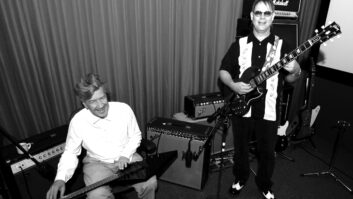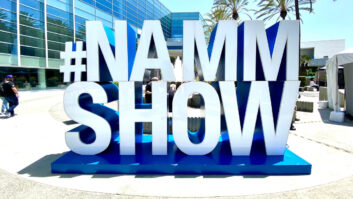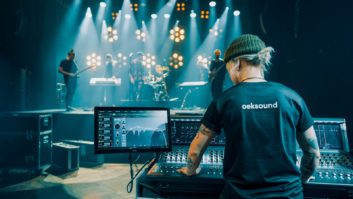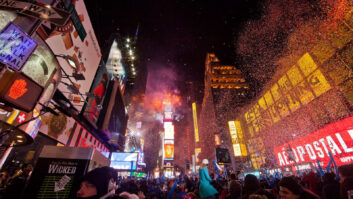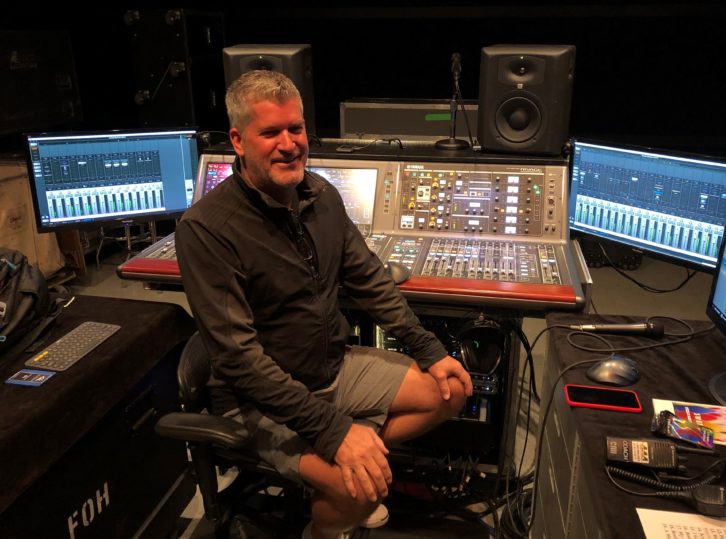
Hearing the name Steely Dan evokes a multitude of musical nods: well-written songs, exceptional musicianship, high-quality recordings and great production. Given the band’s rabid fanbase, expectations from listeners are high whether it be for a new record or a live performance.
That’s what engineer Michael “Coach” Conner stepped into when he took on front-of-house mixing duties for Steely Dan’s recent “Sweet” tour, one that would crisscross the U.S. and feature several residencies. One of those residencies was a six-show run at the Beacon Theatre in New York City last October. Each of the six shows highlighted a specific album played in its entirety, including Aja, The Royal Scam, Gaucho, and Donald Fagen’s The Nightfly, as well as Greatest Hits and By Popular Demand (an audience request night).
Upping the ante was the fact that the shows would be recorded for possible release, a challenge embraced by Conner, monitor engineer George Chapman, systems engineer Andrew Dowling and monitor tech Sean Baca.
“This is a unique situation,” Conner begins, “because we’re at the Beacon for multiple nights and we can make progress in both the recording process and the house mix. I’m mixing the show on a Yamaha RIVAGE PM10 console, and we’re recording at 96 kHz into Steinberg Nuendo.
“We wanted to have as clean a recording path as possible, so all of the microphones from the stage are split in the analog domain to the monitor and FOH stage racks,” Coach continues. “The Clair Global onstage split is bulletproof and yet to be proven obsolete by our newfound ability to send ones and zeros all over the place [Clair Global, Lititz, Pa., provided audio systems for the tour]. The split is upstream of the Stage Racks. Even if George were to switch to a PM10, we would still utilize separate stage racks and not gain share.
“Mics are terminated at the stage into a Yamaha RPio622 I/O rack, which connects via fiber to a Yamaha DSP-R10 DSP engine through Yamaha’s proprietary TWINLANe protocol. The DSP-R10 is then connected to the console surface by network cables using a primary and secondary proprietary network.”
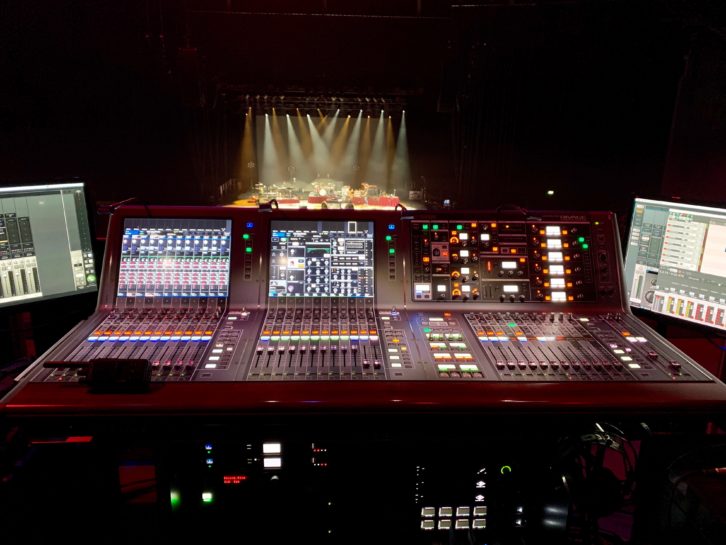
From the Stage
The complement of microphones being used on stage to capture the shows would make a seasoned studio engineer drool. Drums are covered with an assortment of microphones from Earthworks. There are Shure KSM8s for backing vocals, Royer R-121 and Audio-Technica AT4050 for guitar, DPA 4060 for melodica, AEA R84 and KU4 for horns, and a Neumann U87 for trumpet.
Amidst all that, what’s used for lead singer/keyboardist Donald Fagen’s vocal? “Nothing exotic,” laughs Conner. “It’s a standard Shure SM58. Donald uses wedge monitors, and they’re right there next to him. You can put a condenser microphone on his voice and it sounds a little bit better than a dynamic, but you’re going to have cymbals, bleed and all of the other problems that go along with using a sensitive mic for lead vocal on a loud stage. It’s better for me to stick with a dynamic mic.
“I did the same thing with Paul Simon,” he continues. “We used a standard 58, but I put a black ball on it because he prefers that to silver. I can’t tell you how many people come to FOH and ask me what condenser mic I’m using for Paul’s voice. It’s just a 58—a $100 mic!”
Recording to Nuendo
Equally critical to the recording process are the microphone preamps. As Coach explains, “We’re using Yamaha RY16-ML-SILK cards with the Hybrid Microphone Preamplifier that was developed with Rupert Neve Designs. They have transformer modeling and SILK processing, so we can get either a really clean signal or add SILK at the source. We record the direct output of each channel as soon as the signal has been A/D’d. I don’t apply any EQ or highpass filters, so that whoever mixes the recording will have total freedom to do what they want. If I get too aggressive with a filter, we’ll have problems later in the mix process.”
Once the microphone signals have been converted to the digital domain, they can be routed into Nuendo. “We have a redundant recording system,” reveals Andrew Dowling, “whereby audio is simultaneously routed to two computers: a Mac Mini and a MacBook. The two systems are identical except for the computers. The DSP-R10 has an HY144-D-SRC Dante card installed, and we use that to route audio via Dante to the computers. The fun part is that the computers don’t accept the Dante PCIe-R cards we need for recording, so we’re using Sonnet Technologies chassis that convert Thunderbolt to PCIe. The computers connect to the Sonnet chassis via Thunderbolt, and the Sonnet chassis house the PCIe cards.
“Audio files are recorded to two OWC drive bays using SSDs,” Dowling continues, “and when the recording is done, we transfer to a Sony RAID drive for storage to make sure we don’t lose any data. We’re using RAID 1 and a 6-terabyte drive, which actually means that it’s two mirrored 3-terabyte drives. Anything I send to the RAID is exactly duplicated to both discs. If one of the discs dies, we still have the entire show on the other disc.”
One of the side benefits of recording the shows is that Conner can run a virtual soundcheck.
Virtual Soundcheck
“Virtual soundchecks have become a really big deal,” he says, “because the signal from the mic pre is recorded before any processing, and you can use that signal to replace the signal from the microphone. I can put the RIVAGE PM10 into virtual soundcheck mode, which swaps the recorded track for the microphone. Essentially all of the processing I do on the PM10 will be one-for-one. This allows me to continually make small changes to the original source’s processing over time and really dial it in.
“However, you can only use virtual soundcheck to prepare things to a certain degree,” he adds. “You can’t rely on it because there’s no band performing in the space, so the acoustic behavior of the room is missing. If we take this show [at the Beacon] and move it into another venue, we’ll have already captured the sound of this room to some degree on every microphone that’s on the stage. It’s only bleed and it varies by input (some are more of a problem than others) but it’s cumulative—times 40 microphones—and that impacts the mix from room to room dramatically.
“If I have all these open microphones, I’ve certainly got the sound of the Beacon in the recording when I arrive at the next show. You can spend an hour mixing on the speakers with the show from a previous venue and end up far away from where you need to be when you actually hear the band perform in the room today. Virtual soundcheck is very nice [for example] for fixing a vocal in your headphones or on near-fields, but it’s not necessarily the best thing in the world for getting the P.A. correct. For getting the P.A. correct, I would suggest following the steps outlined by Howard Page in one of his many articles on the subject.”
Conner is using Universal Audio plug-ins “but they are not associated with the recording. UA has allowed me to get rid of three or four racks of analog gear that I used to carry around. I’m using three Apollo16s and a UAD-2 LiveRack. They’re all connected to the PM10 through two Ferrofish A32 Dante interfaces [Ed.: the A32 converts between Dante and analog I/O] so I can insert the UA plug-ins on the PM10 using Dante.”
A Mix in Process
As of now, release dates for the Beacon recordings of Steely Dan are TBA. According to producer/mix engineer Patrick Dillett, “Donald and I are enjoying listening to all the shows to try and decide which performances really stand out. There are so many to choose from…Coach did a great job capturing the sound of the band. His mic choices were excellent, and the recordings are studio-quality. I am thrilled that we will be able to release a live recording of this set of players; a band that both Donald and Walter often called the best band they ever played with.”
Stay tuned for more news.




